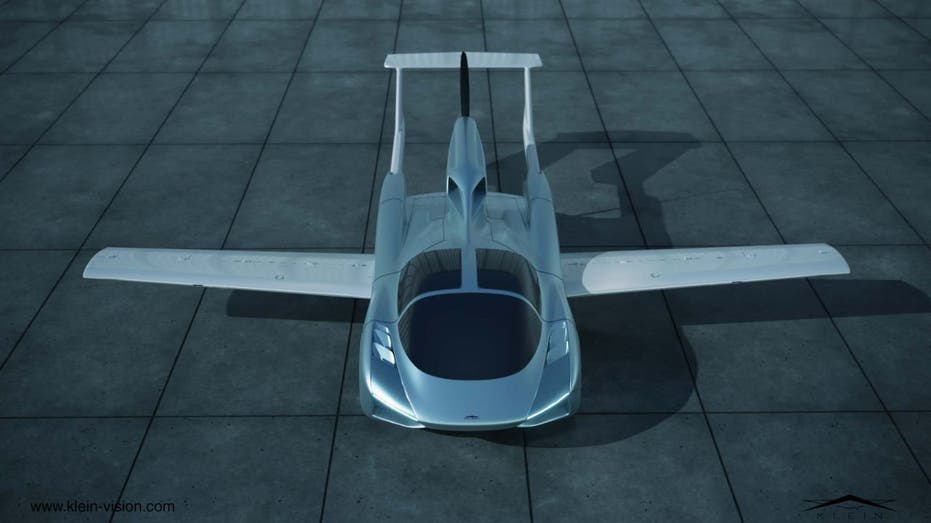Innovative Flying Car with 620-Mile Range Set for Launch, Revolutionizing Personal Transportation
AirCar nears launch with 620-mile range, promising to revolutionize travel as tech expert Kurt “CyberGuy” Knutsson weighs in.

Imagine avoiding gridlocked highways altogether, rolling up to a runway, and soaring above the traffic—without changing vehicles. That’s precisely the vision behind the Klein Vision AirCar, a flying car that is set to move from science fiction to the real world for early buyers by 2026. After more than three decades of work, this ambitious project stands poised to transform how we think about personal mobility.
The journey of the AirCar began in Slovakia, under the guidance of designer Štefan Klein, who has been chasing the dream of flying cars since the late 1980s. The team’s persistence has paid off: after multiple prototypes and over 500 successful test flights, the AirCar is now approaching full certification, with plans for customer deliveries as soon as early 2026. Even more intriguing, the company is already looking ahead to an amphibious version that would allow the vehicle to both fly and land on water, further expanding its travel potential.
So, what makes the AirCar unique? On the road, it looks like a sleek, stylish sports coupe—sporting four wheels and a streamlined body designed to blend in with luxury sedans. The transformation from car to plane is stunningly simple: with the push of a button, the wings unfold and the tail extends in under 90 seconds, requiring no manual adjustments from the driver. Inside, the steering wheel transforms into a flight yoke and additional pedals appear for aircraft-style control, making the switch between driving and flying nearly seamless for those with piloting experience.
Beneath the hood, the production model will be powered by one of three 3.2-liter V6 engines provided by Adept Airmotive. The base model produces 280 horsepower, while the top-of-the-line, twin-turbo variant offers 340 horsepower. On the ground, the AirCar can reach speeds up to 124 mph, handling much like a high-end sports car. Once airborne, it cruises at 155 mph, with a remarkable range of up to 620 miles on a single fuel tank, all while running on standard high-octane gasoline you can find at most gas stations.
The cabin is unpressurized, so pilots are advised not to exceed 10,000 feet unless they carry supplemental oxygen. In terms of everyday practicality, it measures roughly as long as a Mercedes S-Class and is slim enough to fit into a standard parking space, making it far more versatile than other flying vehicle prototypes.
Operating the AirCar demands more than a sense of adventure. Anyone planning to take to the skies must hold both a standard driver’s license and a private pilot’s license. The controls are intuitive for experienced pilots, and no extra training will be necessary for license holders—a clear nod to accessibility for aviation enthusiasts. However, access to a runway remains essential, limiting the AirCar’s usability to those who can reach appropriate facilities.
With a price tag expected between $800,000 and $1.2 million, the AirCar sits in the same financial neighborhood as exotic supercars and small private airplanes. Its market will likely consist of affluent individuals, business travelers seeking new efficiencies, and perhaps air taxi operators seeking to offer something truly novel to their clients.
In contrast to many flying car concepts that never progress beyond the prototype stage, the AirCar is distinguished by its road-legal four-wheel design and imminent mass production. Notably, this leap forward has been accomplished with a relatively lean budget, particularly when compared to the nine-figure investments swallowed by other industry contenders.
Development is already underway for future models with three or four seats, and the anticipated amphibious version could allow landings not just at airports, but on lakes or islands—opening up entirely new travel possibilities that blur the line between cars, planes, and boats.
The prospect of sharing not just the roads but also the skies with personal flying vehicles is inching closer to reality. While regulatory, logistical, and safety questions remain, the arrival of the AirCar signals a pivotal step. Whether it becomes a common sight in the years ahead or remains a curiosity for the wealthy, this technological milestone marks a crucial moment in the evolution of transportation.
As we stand on the brink of an era where cars may soon roll onto runways and lift off into the clouds, the question becomes: Are our skies ready for this?




